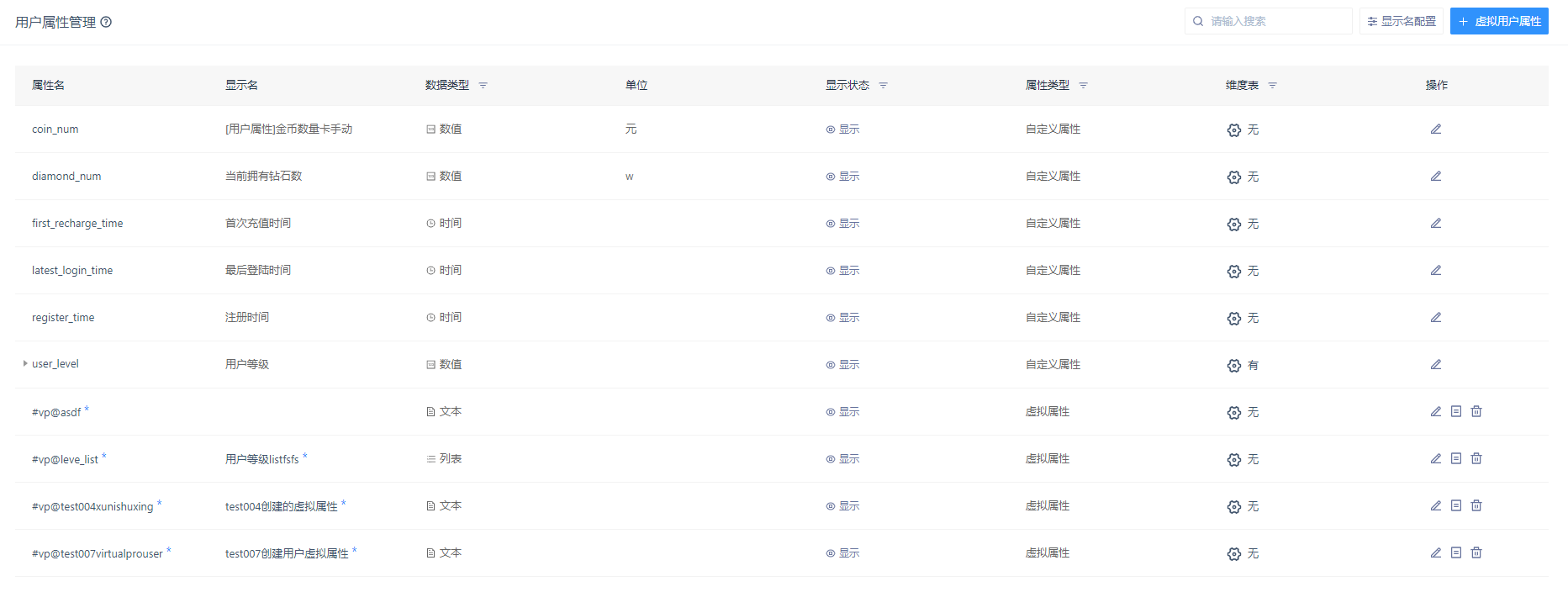# Metadata Management
# I.The Significance of Metadata Management
Metadata management is mainly used to manage the display form of all reported data, including modifying the display status of all events, event attributes, and user features in the system; adjusting the display names and comments of events, event attributes, and user features; Modifying the display unit of numerical attributes.
# II. Location and Applicable Role of Metadata Management
In the top navigation bar, 'event management', 'event attribute management' and 'user feature management' in 'data management' are the categories of metadata management.
| Major category | Specific content | Company Supervisor | Administrator | Analyst | Ordinary members |
|---|---|---|---|---|---|
| Metadata view | View the status of all events and properties | ● | ● | ▲ | ○ |
| Metadata editing | Modify display state, display name, comment, display unit of numeric attribute | ● | ● | ▲ | ○ |
Permission description:
● Role must have
▲ The role has the permission by default, but can revoke
△ The role is not available by default, but can be authorized
○ Role must not have
# III. Overview of Metadata Management Page
Metadata management is divided into three parts: meta-event management, event attribute management, and user feature management.
Each part can be searched and set separately. After setting, meta-events, event attributes and user features will be displayed in each analysis model with new conditions and display names.
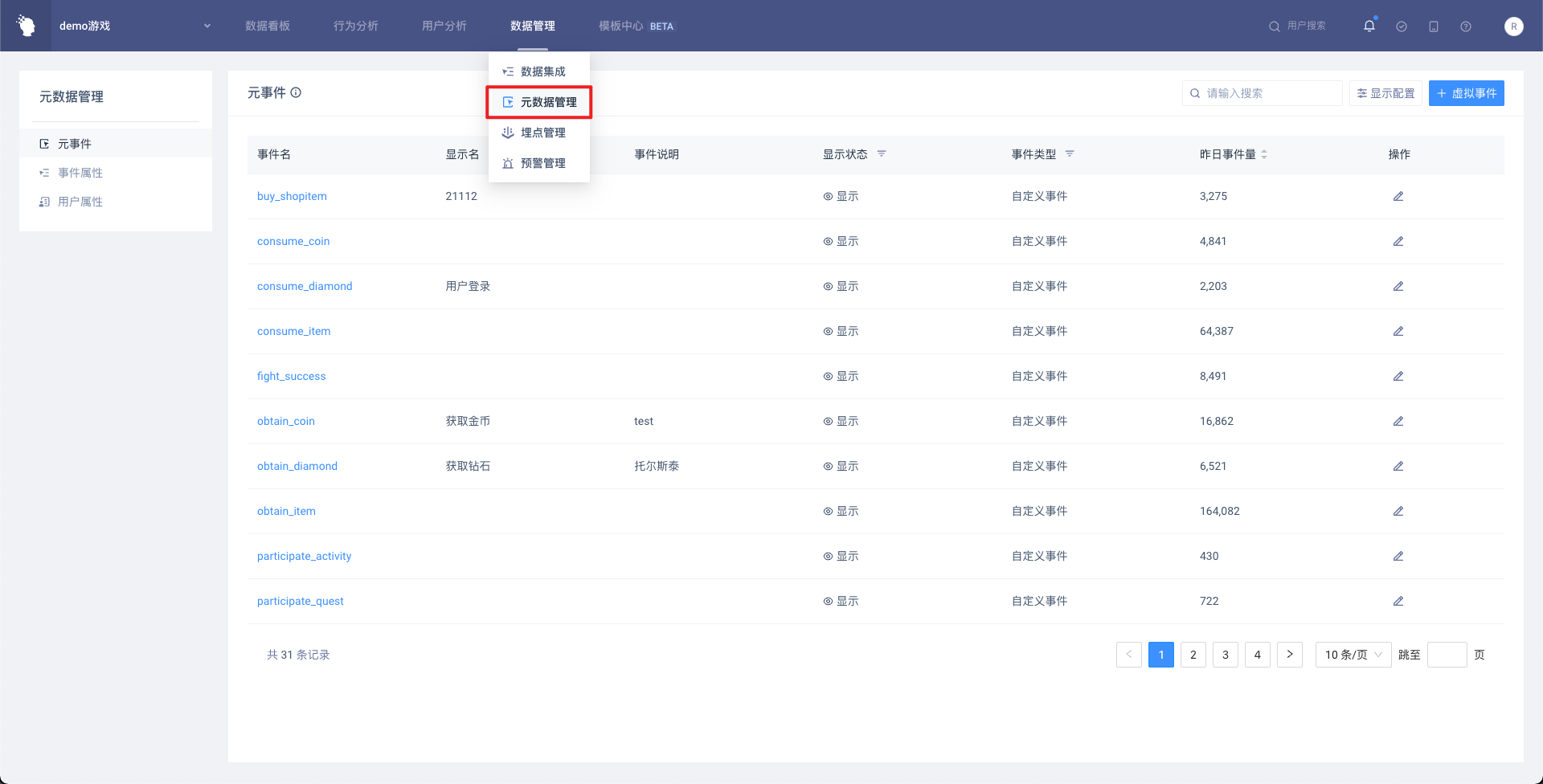
# IV. Usage of Metadata Management
# 4.1 Basic Requirements for Meta-events, Event Attributes, User Attributes
- A meta-event is a set of attributes that do not have a data type and can have the same name as an event attribute or a user attribute.
- The name of the event attribute is globally unique and the type is consistent, i.e. any modification to any attribute is a global modification.
- The name of the user feature is globally unique and the type is consistent, i.e. any modification to any attribute is a global modification.
- Event attributes and user features are two systems, i.e. event attributes and user attributes with the same name.
- Names of all preset attributes preceded by '#'.
- The default display state for all preset attributes follows its initial settings, and the default display state for all custom events or custom attributes is 'visible'.
# 4.2 Query and Edit Meta Events
Events can be retrieved by filtering specified condition, showing all events by default:

Click 'Modify' to modify the display name, display status and comments.
The display name will affect the display name in the analysis model, and the status will affect whether it is displayed in the analysis model:
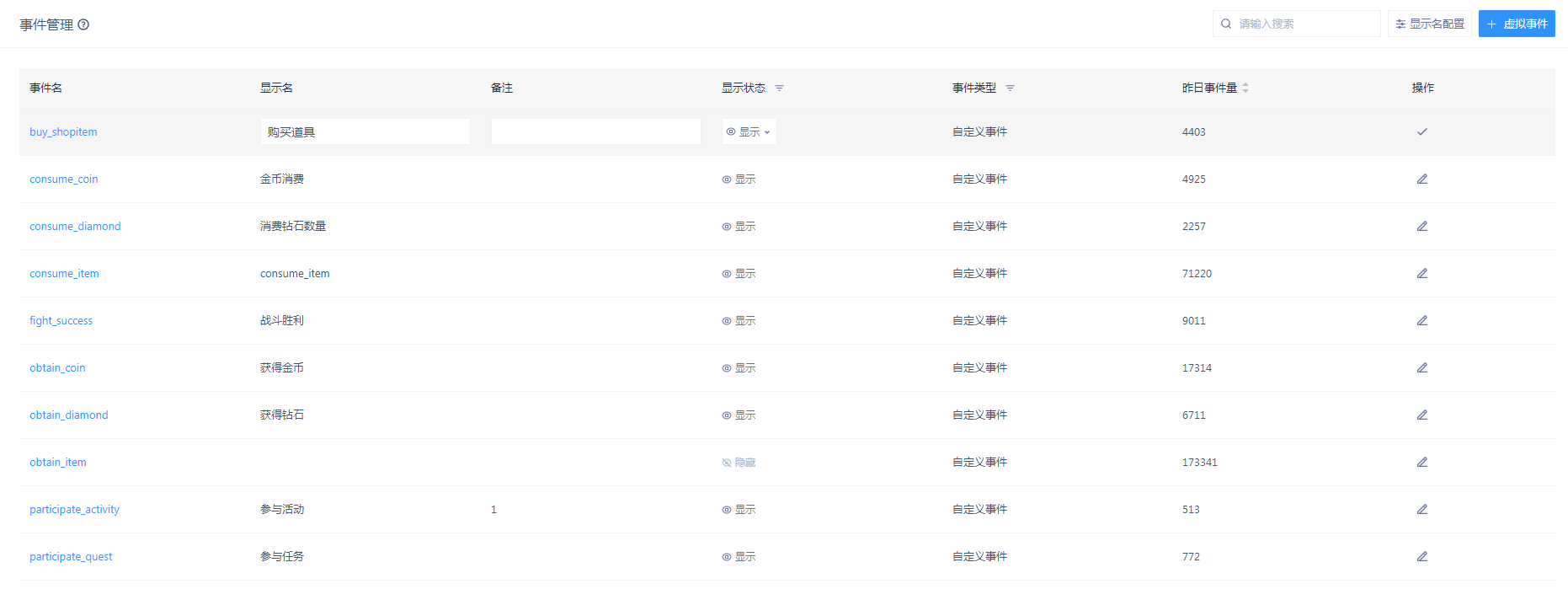
# 4.3 Query and Edit Event Attributes for Specific Events
You can query all event attributes under specific events and modify event attributes.
Since events or attribute modifications are global modifications, modifying attributes here will also affect the situation under the event attribute module:
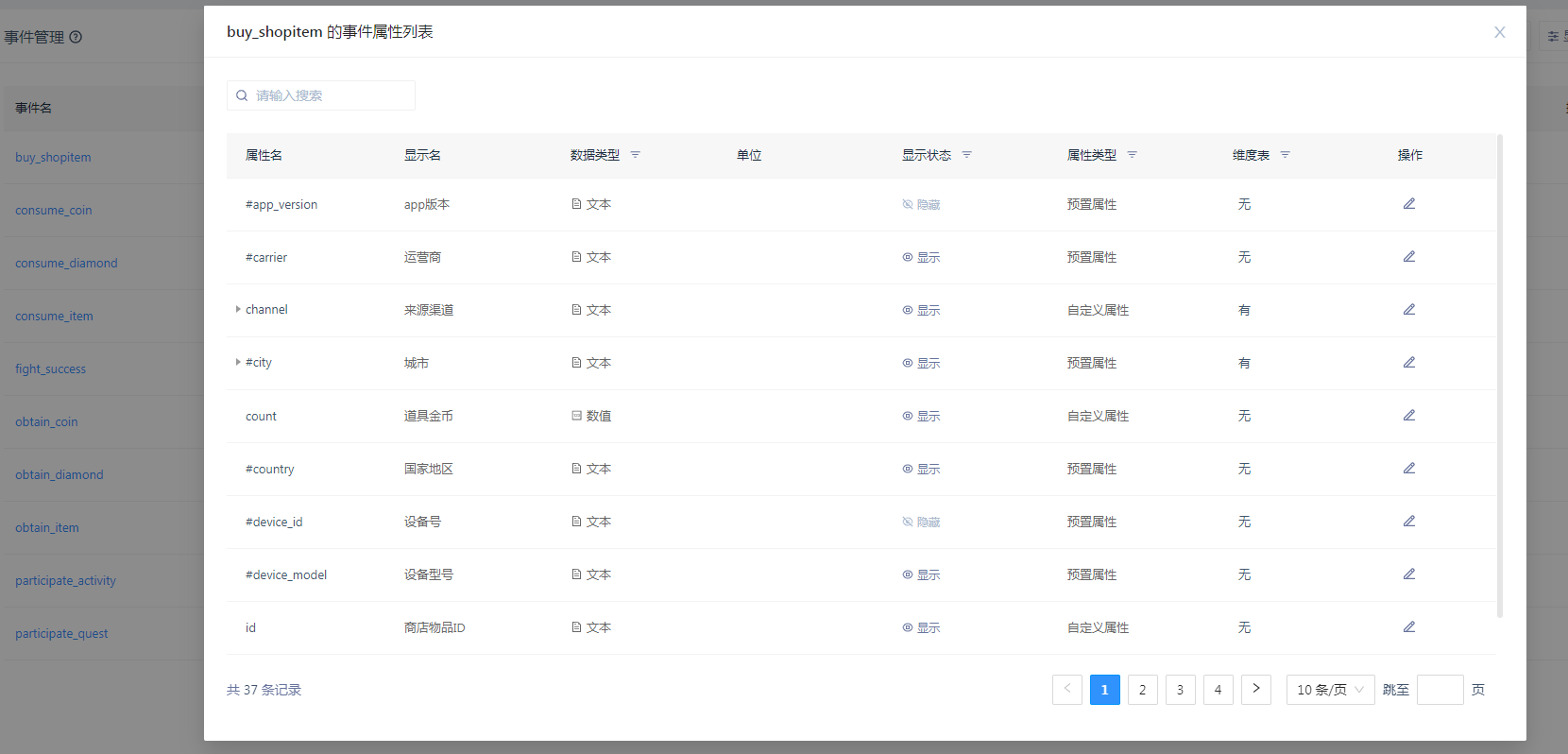
# 4.4 Query and Edit Event Attributes
Like query editing of meta-events, event attributes can be retrieved by filtering specified conditions, and all event attributes are displayed by default. In addition, the event attributes can be queried with the option of 'preset or not'.
The modification of event attributes is a global modification:
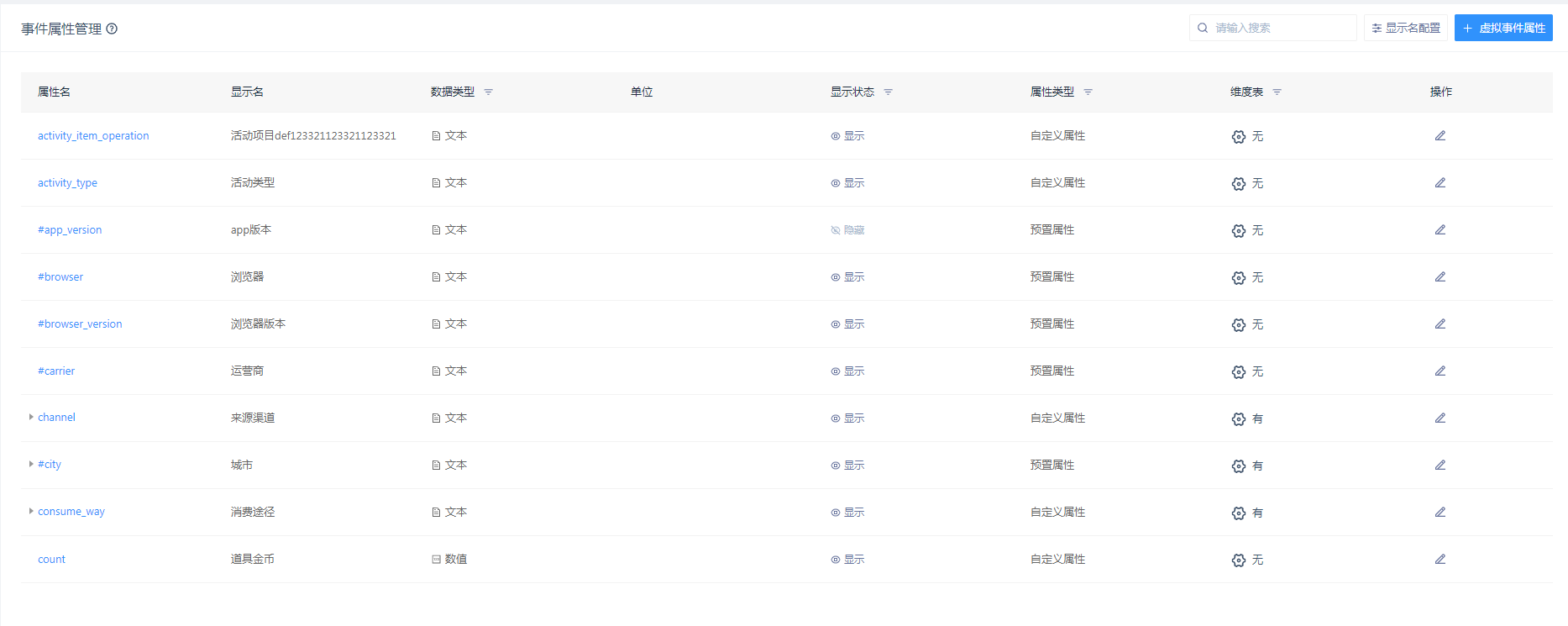
# 4.5 Query and Edit User Features
The same as query editing for meta-events, user feature retrieval can be done by filtering specified conditions, showing all user features by default. In addition, user features have the option of 'preset or not' can also be queried.
Modifications to user features are global:
